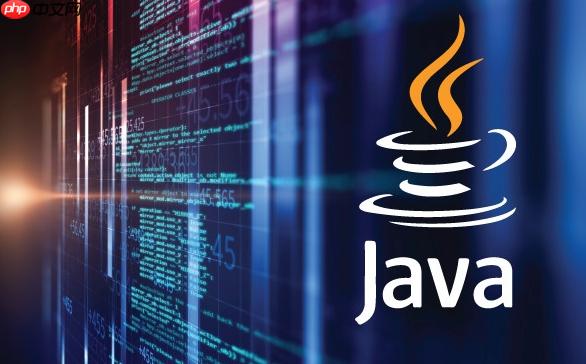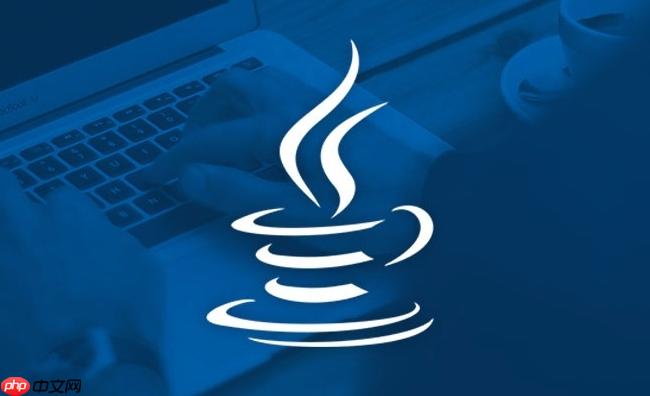java中调用shell命令的核心方法是runtime.getruntime().exec(),但需注意进程阻塞、流处理等问题。1. 命令执行:exec()启动独立进程执行系统命令;2. 输入/输出流:需手动处理子进程的输入输出流,否则可能导致阻塞;3. 异常处理:必须捕获ioexception以应对命令执行失败;4. 避免阻塞:使用多线程或异步io读取输出和错误流;5. 防止命令注入:对用户输入进行验证或使用processbuilder构建参数化命令;6. 平台兼容:通过条件编译或使用java api减少平台差异影响;7. 资源管理:使用try-with-resources确保流正确关闭;8. 更优选择:推荐使用processbuilder,其支持设置工作目录、环境变量等高级功能;9. 长时间运行命令:使用executorservice实现异步处理并设置超时机制,提升程序健壮性与可靠性。

Java中调用Shell命令的核心在于Runtime.getRuntime().exec()方法,它允许Java程序启动一个新的进程来执行系统命令。然而,简单调用exec()可能面临很多问题,例如进程阻塞、输入输出流处理不当等。掌握其正确使用方式是关键。

掌握Runtime.exec

Runtime.getRuntime().exec()方法是Java程序与底层操作系统交互的桥梁。它本质上是启动一个新的操作系统进程来执行指定的命令。这个命令可以是任何在命令行中可以执行的程序,例如shell脚本、系统工具或者其他可执行文件。
立即学习“Java免费学习笔记(深入)”;
使用exec()方法,你需要理解几个关键点:

exec()方法会启动一个新的进程来执行命令。这个进程与Java虚拟机(JVM)是独立的。IOException来处理这些异常。代码示例:
import java.io.BufferedReader;
import java.io.IOException;
import java.io.InputStreamReader;
public class ShellExecutor {
public static void main(String[] args) {
try {
Process process = Runtime.getRuntime().exec("ls -l"); // 执行ls -l命令
// 获取标准输出流
BufferedReader reader = new BufferedReader(new InputStreamReader(process.getInputStream()));
String line;
while ((line = reader.readLine()) != null) {
System.out.println(line);
}
// 获取标准错误流
BufferedReader errorReader = new BufferedReader(new InputStreamReader(process.getErrorStream()));
String errorLine;
while ((errorLine = errorReader.readLine()) != null) {
System.err.println(errorLine);
}
// 等待进程执行完毕
int exitCode = process.waitFor();
System.out.println("Exit Code : " + exitCode);
} catch (IOException | InterruptedException e) {
e.printStackTrace();
}
}
}这个例子展示了如何执行一个简单的shell命令 (ls -l),并读取其标准输出和标准错误输出。process.waitFor()方法用于等待子进程执行完毕,并获取其退出码。
如何避免Runtime.exec的常见陷阱?
Runtime.exec()虽然强大,但也容易出错。以下是一些常见的陷阱以及如何避免它们:
exec()方法,可能会导致命令注入漏洞。应该对用户输入进行严格的验证和过滤,或者使用参数化命令来避免这个问题。try-with-resources语句来自动关闭这些流。更健壮的实现:
import java.io.*;
public class RobustShellExecutor {
public static void main(String[] args) {
try {
ProcessBuilder processBuilder = new ProcessBuilder("ls", "-l"); // 使用ProcessBuilder
processBuilder.directory(new File("/tmp")); // 设置工作目录
Process process = processBuilder.start();
// 使用线程来处理输出和错误流
Thread outputThread = new Thread(() -> {
try (BufferedReader reader = new BufferedReader(new InputStreamReader(process.getInputStream()))) {
String line;
while ((line = reader.readLine()) != null) {
System.out.println(line);
}
} catch (IOException e) {
e.printStackTrace();
}
});
Thread errorThread = new Thread(() -> {
try (BufferedReader reader = new BufferedReader(new InputStreamReader(process.getErrorStream()))) {
String line;
while ((line = reader.readLine()) != null) {
System.err.println(line);
}
} catch (IOException e) {
e.printStackTrace();
}
});
outputThread.start();
errorThread.start();
int exitCode = process.waitFor();
outputThread.join(); // 等待线程完成
errorThread.join();
System.out.println("Exit Code : " + exitCode);
} catch (IOException | InterruptedException e) {
e.printStackTrace();
}
}
}这个例子使用了ProcessBuilder类,它提供了更多的配置选项,例如设置工作目录。同时,使用了多线程来异步处理输出和错误流,避免了进程阻塞。
ProcessBuilder相比Runtime.exec有什么优势?
ProcessBuilder是Runtime.exec()的更现代、更灵活的替代品。它提供了以下优势:
ProcessBuilder允许你设置工作目录、环境变量等。ProcessBuilder来构建参数化的命令,避免命令注入漏洞。ProcessBuilder提供了更好的错误处理机制。使用ProcessBuilder构建参数化命令:
import java.io.IOException;
import java.util.Arrays;
import java.util.List;
public class ParameterizedCommand {
public static void main(String[] args) {
String filename = "test.txt"; // 假设这是用户输入
List<String> command = Arrays.asList("ls", "-l", filename); // 构建参数化命令
ProcessBuilder processBuilder = new ProcessBuilder(command);
try {
Process process = processBuilder.start();
// ... 处理输出和错误流 ...
} catch (IOException e) {
e.printStackTrace();
}
}
}这个例子展示了如何使用ProcessBuilder来构建参数化的命令。即使filename包含恶意字符,也不会导致命令注入漏洞,因为它被视为ls命令的一个参数。
如何在不同操作系统上兼容地执行Shell命令?
跨平台兼容性是一个挑战。不同的操作系统使用不同的shell和命令。为了解决这个问题,可以考虑以下方法:
java.nio.file包来操作文件和目录。条件编译示例:
public class PlatformSpecificCommand {
public static void main(String[] args) {
String os = System.getProperty("os.name").toLowerCase();
String command;
if (os.contains("win")) {
command = "cmd /c dir"; // Windows
} else {
command = "ls -l"; // Linux/macOS
}
try {
Process process = Runtime.getRuntime().exec(command);
// ... 处理输出和错误流 ...
} catch (IOException e) {
e.printStackTrace();
}
}
}这个例子展示了如何根据操作系统执行不同的命令。
如何处理长时间运行的Shell命令?
如果Shell命令需要很长时间才能完成,那么应该使用异步IO或者多线程来避免阻塞Java程序。可以使用java.util.concurrent包中的类来管理线程。
使用ExecutorService:
import java.io.*;
import java.util.concurrent.*;
public class LongRunningCommand {
public static void main(String[] args) {
ExecutorService executor = Executors.newFixedThreadPool(2); // 创建线程池
try {
Process process = Runtime.getRuntime().exec("sleep 10"); // 模拟长时间运行的命令
// 提交任务到线程池
Future<?> outputFuture = executor.submit(() -> {
try (BufferedReader reader = new BufferedReader(new InputStreamReader(process.getInputStream()))) {
String line;
while ((line = reader.readLine()) != null) {
System.out.println(line);
}
} catch (IOException e) {
e.printStackTrace();
}
});
Future<?> errorFuture = executor.submit(() -> {
try (BufferedReader reader = new BufferedReader(new InputStreamReader(process.getErrorStream()))) {
String line;
while ((line = reader.readLine()) != null) {
System.err.println(line);
}
} catch (IOException e) {
e.printStackTrace();
}
});
int exitCode = process.waitFor();
outputFuture.get(5, TimeUnit.SECONDS); // 设置超时时间
errorFuture.get(5, TimeUnit.SECONDS);
System.out.println("Exit Code : " + exitCode);
} catch (IOException | InterruptedException | ExecutionException | TimeoutException e) {
e.printStackTrace();
} finally {
executor.shutdown();
}
}
}这个例子使用了ExecutorService来管理线程,并设置了超时时间,避免无限期等待。
安全地使用Runtime.exec()和ProcessBuilder需要谨慎处理输入、输出和错误流,并考虑平台兼容性和安全性。通过掌握这些技巧,可以编写出更健壮、更可靠的Java程序。
以上就是Java中如何调用Shell 掌握Runtime.exec的详细内容,更多请关注php中文网其它相关文章!

每个人都需要一台速度更快、更稳定的 PC。随着时间的推移,垃圾文件、旧注册表数据和不必要的后台进程会占用资源并降低性能。幸运的是,许多工具可以让 Windows 保持平稳运行。

Copyright 2014-2025 https://www.php.cn/ All Rights Reserved | php.cn | 湘ICP备2023035733号